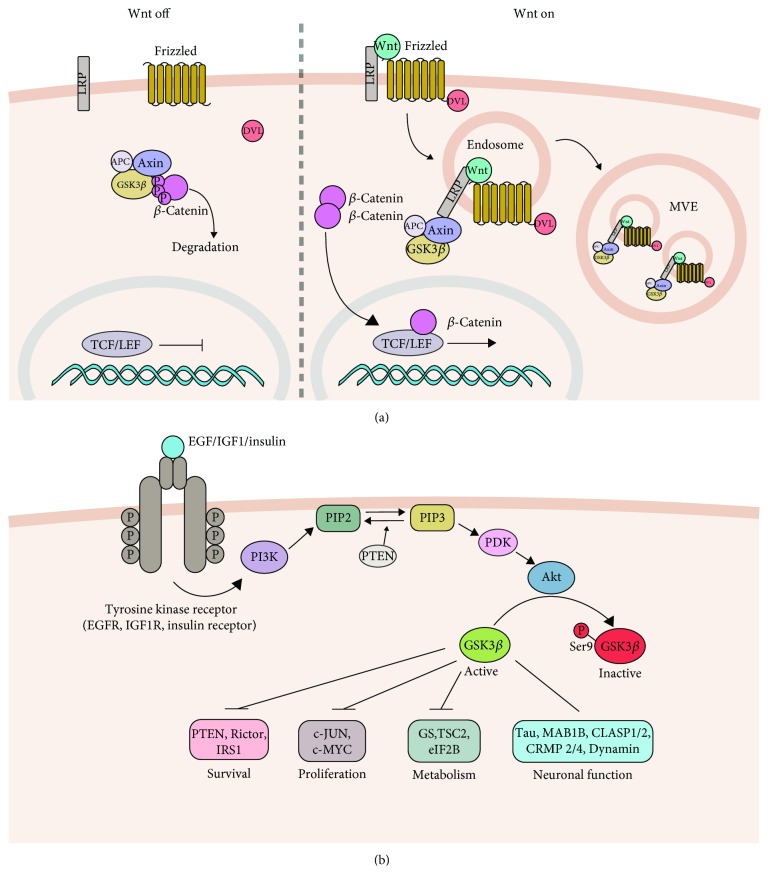Figure 1.
Molecular mechanisms of GSK-3β regulation. (a) The Wnt canonical pathway. In the absence of Wnt, β-catenin is degraded within a destruction complex composed of Axin, APC, and GSK-3β proteins. Following Wnt binding to Frizzled and LRP5/6 receptors, Dvl is recruited resulting in the sequestration of the destruction complex within the MVB. This allows β-catenin to accumulate, translocate to the nucleus, and subsequently induce gene expression via the TCF/LEF transcription factors. (b) The PI3K/Akt pathway. The activation of PI3K following the stimulation of Tyrosine Kinase Receptor leads to the production of PIP3. Akt kinase is recruited and is activated upon phosphorylation at Thr308 and Ser473 by PDK1 and mTORC2, respectively. The signal is terminated following PIP3 dephosphorylation by PTEN phosphatase. Akt kinase phosphorylates and inhibits GSK-3β activity by a reversible phosphorylation at Ser9. An incomplete list of the GSK-3β substrates and cellular processes that it regulates is shown.

